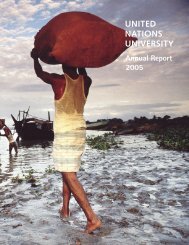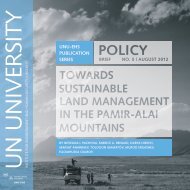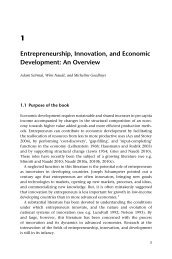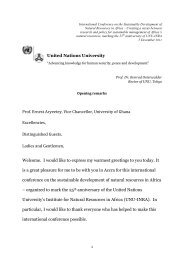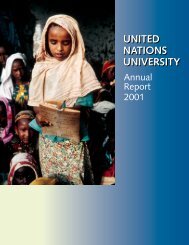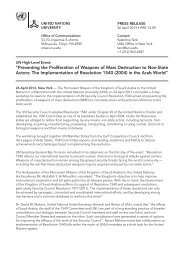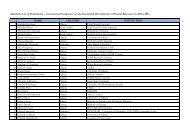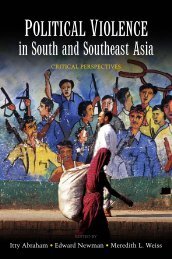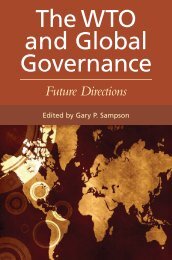Sample Chapter - United Nations University
Sample Chapter - United Nations University
Sample Chapter - United Nations University
Create successful ePaper yourself
Turn your PDF publications into a flip-book with our unique Google optimized e-Paper software.
Asia and regional integration theory 9<br />
If the above are theories of integration, there are also theories that analyse<br />
the forms and workings of cooperation shown in Figure 1.1 (regularized<br />
forums, international regimes and international organizations).<br />
These could be called, for the sake of discussion, “theories of integrated<br />
entities” (or theories of governance): for example, frameworks for analysing<br />
the workings of international regimes (such as compliance and effectiveness);<br />
the use of multilevel governance to analyse highly developed<br />
integrated entities such as the European Union (EU); and the application<br />
of theories such as network theory to the analysis of the formation<br />
of public policy within such integrated entities. 6<br />
2.2 Problem sectors and substantive integration<br />
Depending on the problem sector (or issue area), the types of relationships<br />
between nations illustrated in Figure 1.1 can develop in different<br />
ways. The degree of substantive integration can also differ by problem<br />
sector. This section will examine integration by sector and also consider<br />
the difference and relationship between formal and substantive<br />
integration.<br />
Figure 1.3 Sectors of integration<br />
Source: Y. Yamamoto.




